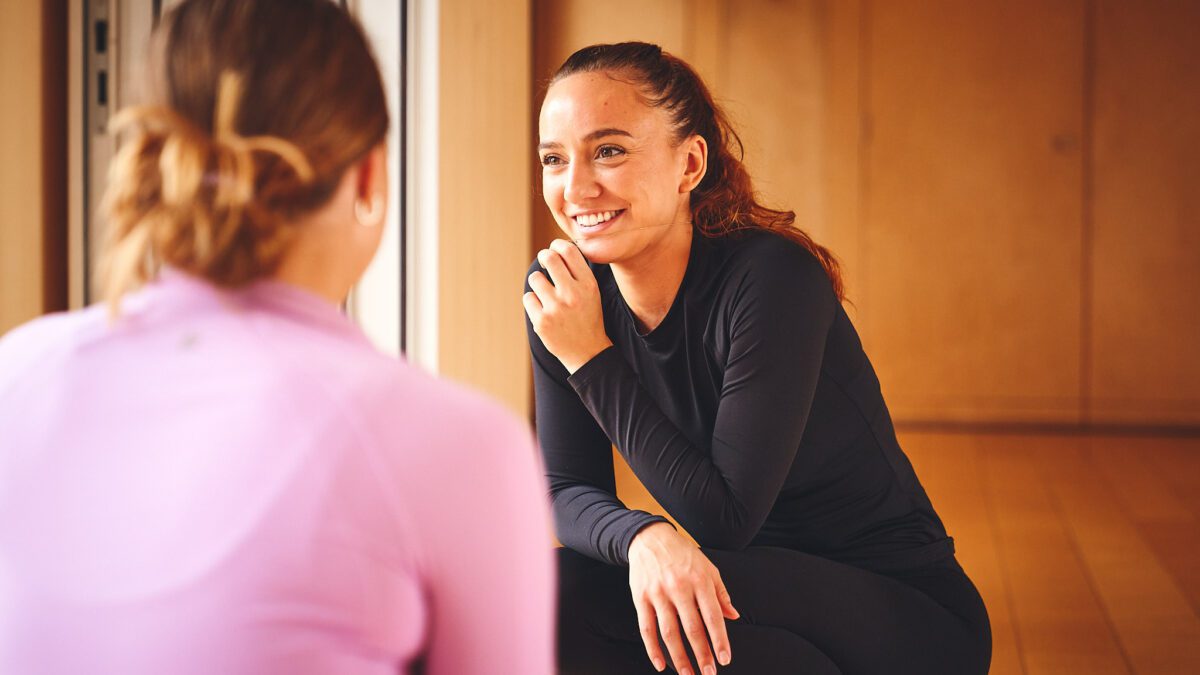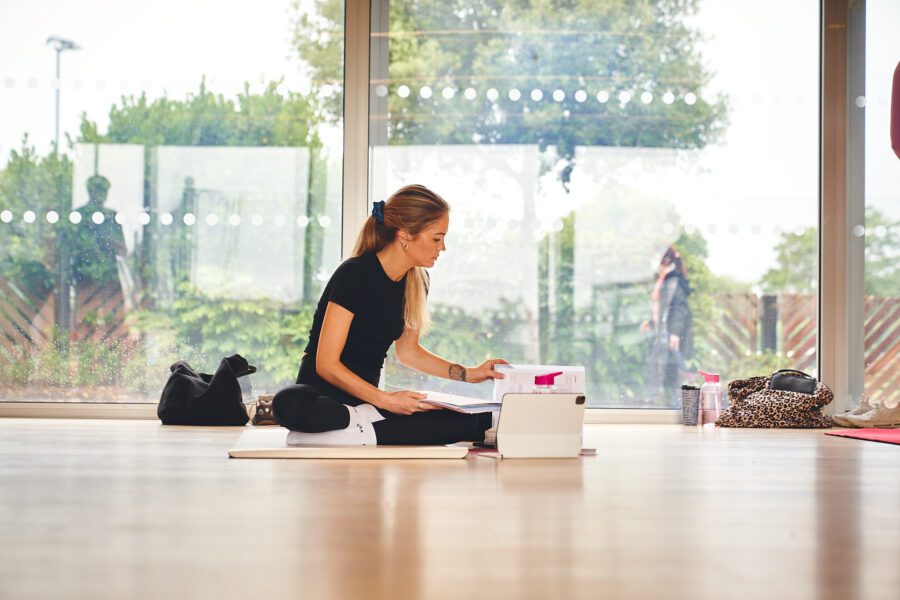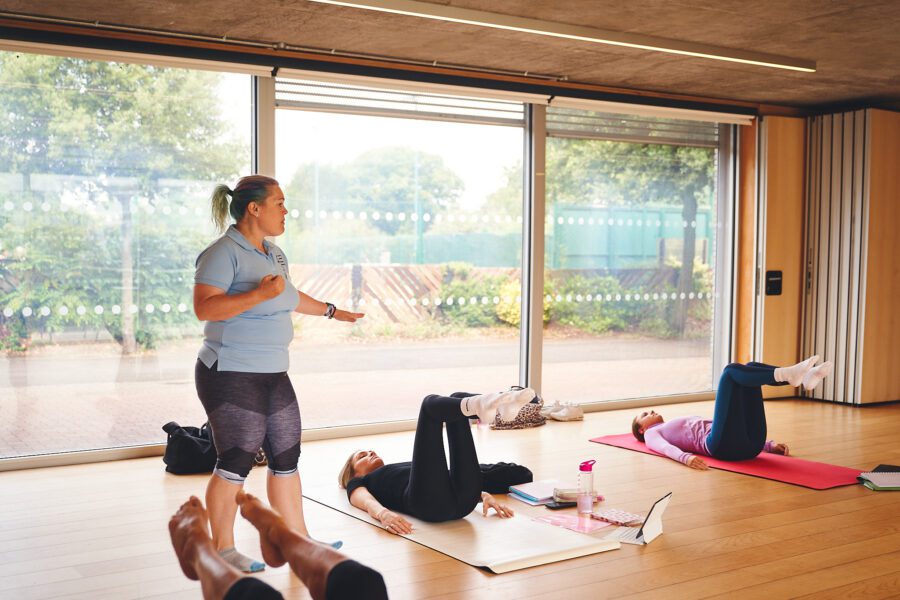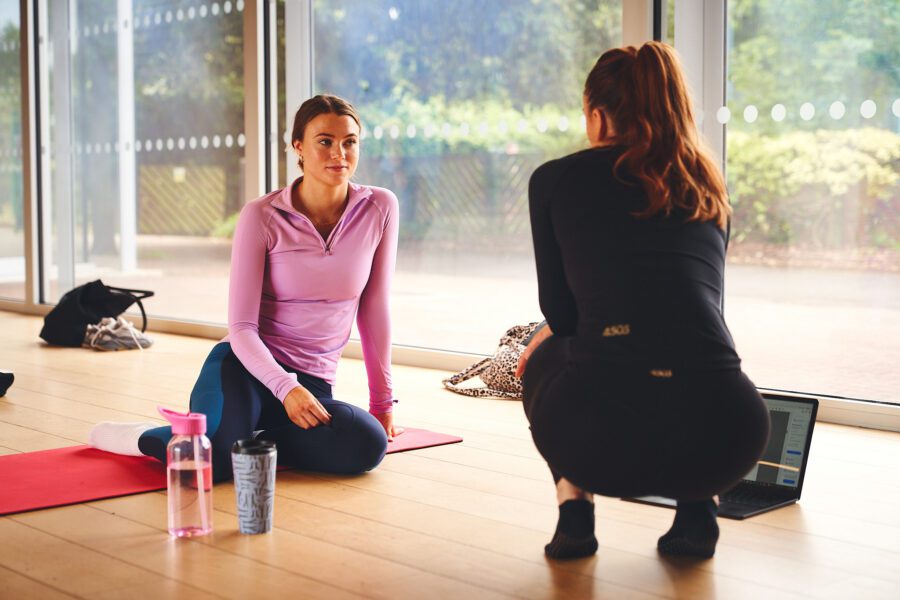



Starting a Pilates career is both exciting and rewarding. As you watch the positive impact Pilates has on your class’s movement, posture, core strength, and stamina, you can be assured that you’re making a difference to your community doing what you love. As with any new venture, there are a few key things you need to be aware of when becoming a Pilates instructor, whether you’re looking to become self employed or employed in a local studio. In this comprehensive guide, we will be sign-posting some more in-depth topics you should dive into to be sure you’re getting started on the right foot, and turning your passion into a lasting career.

Working as a Pilates instructor is not a one-size-fits-all profession, and many doors are open to you depending on the level of education you received during your Pilates teacher training. For example, you may have specialised in Exercise Referral, and are looking to open a studio that focuses on rehabilitation, or even you trained to be a master practitioner with skills in using a Reformer machine. It’s never too late to try something new, but a good way to ensure your business remains your passion (and your clients keep coming back), is to focus on the area of Pilates you love the most. This will help impact the way you teach your classes, market your business, engage with your community, and keep your classes fresh (hence why this is the beginning point on the list). Really think about the area you want to specialise in and, if you haven’t done so already, find a course that will get you levels of certification and accreditation in this space.
At the beginning of your career, it’s all about gaining experience. You’ll most likely have been to Pilates classes before, and it’s great to research different teaching methods first hand, seeing what works, how to keep a class engaged, teaching adaptions etc. However, it’s another thing entirely to be at the front teaching rather than just participating. The best thing to do is to get some practise during the time you’re in training once you pass your Level 3 Mat Pilates Course, or not too long after. The supervising instructor may ask you to teach the warm-up or a few main session exercises over a period of time and this is an excellent way to learn as you will have plenty of valuable feedback from the teacher and the class. Try to attend, or teach, a few different style classes, including some 1-2-1 work if you’re qualified to do so. This will be a good time to consider where and how you would like to work. A few options could be:
Each one of these options requires different levels of additional set-up, which you can read about here: Starting Your Career As A Pilates Teacher

Regardless of whether you’re employed or self-employed, you will likely encounter class participants who have different skill levels, or clients with additional needs when it comes to Pilates training, such as people with arthritis or new mums. Pilates has a reputation for being rehabilitative, so it is important that you offer modifications where possible. This can be through various means, for example through the use of equipment such as stability balls, Pilates balls, resistance bands or pillows. Read more about adaptations and considerations for different abilities here.
As a new Pilates teacher, it is essential to gain a good level of understanding of how to adapt your classes to fit the needs of the group. Remember, each class is different, so the first step is to really get to know the people who attend your class. This is an often overlooked step as a new instructor, as you may be tempted to teach ‘by the book’, focusing on getting the information across rather than on how well the instruction is being used. The majority of classes that you teach will be mixed ability so suitable levels must be set with optional adaptations, progressions and modifications, as previously mentioned. This is done a lot easier when class sizes are smaller, but the best thing to keep in mind is to think about teaching visually. Pilates is about physical learning, and visualisation techniques can help participants achieve a better mind-body connection when doing a new routine. Figure out what works best for the group, or 1-2-1 client in front of you considering different types of learners:
An instructor who takes the time to accommodate their clients’ needs will be respected, trusted and gain a loyal client base.
You can learn more about tailoring a class to specific groups and getting to know your clients by reading this: Tips for Being a Pilates Teacher – Part 2
Believe it or not, marketing is not a mysterious art, but it does take a bit of time and there is one rule to keep in mind as a new Pilates instructor: really take the time to think about your clients.
Questions like this will help you keep your marketing sharp, and prevent wasting energy on marketing channels that are not the best fit for your clients. For example, if your clients are mostly elderly referral clients, you are less likely to reach them by being on social media such as Instagram or TikTok. If your clients are busy professionals, then having an email marketing campaign that reminds them of their classes and gives them tips for how to balance Pilates with their working life will ensure your clients remain engaged with you.
Building a good reputation through word of mouth is a powerful marketing tool that is often overlooked. This isn’t something that you can achieve overnight as a new Pilates teacher, but consistency, knowing your audience, and being able to adapt your skills to showcase what makes you the best Pilates instructor will go a long way to building a standout reputation. Some positive examples of marketing for Pilates instructors can be found here: Marketing your Pilates Business.

Once you’ve started to build a client base, you’ll want to ensure that they keep coming back, and that your business is equipped for you to do so. This can be as straight-forward as having a discount for booking classes in bulk, or having a subscription based system. Generally people are more committed if they have paid in advance. If they attend more, this will help them achieve results, which will then encourage further commitment. Plus, once you have payment sorted, you can add them to your email list, and keep them engaged with your business via an email newsletter updating them about new classes, times, opportunities etc.
Another thing to consider is keeping the classes fresh with new skills and class opportunities. While Pilates trends come and go, it’s good to see what classes are popular in your local area, and any business ventures you want to explore, such as making connections with GP surgeries for referrals or for post-natal classes. The best way to keep your skills up even after you qualify is to enrol on CPD courses, attend workshops, and events in your chosen area of Pilates. Learning a specialist skill might open up a new world of possibilities.
Lastly, build a good bond with your clients. A big part of your job is establishing a relationship with the people who attend your class. Greet them upon entering, learn their names, ask how they are doing, etc. If you have trouble remembering someone’s name, try to repeat it right away after they tell you their name, i.e. “Nice to meet you, Jo.” This will help it to stick. When your clients feel comfortable with you and enjoy your classes because they can see progress, they will spread the word about your service. More people will come as a result, and they may bring their friends and family. It’s a win-win situation
If you’re looking to learn more about being a first time self-employed Pilates instructor, why not check out this further blog detailing practical skills of finding an accountant, booking a venue, and keeping your career as a Pilates Instructor progressing: 5 Tips for Starting your Own Pilates Class